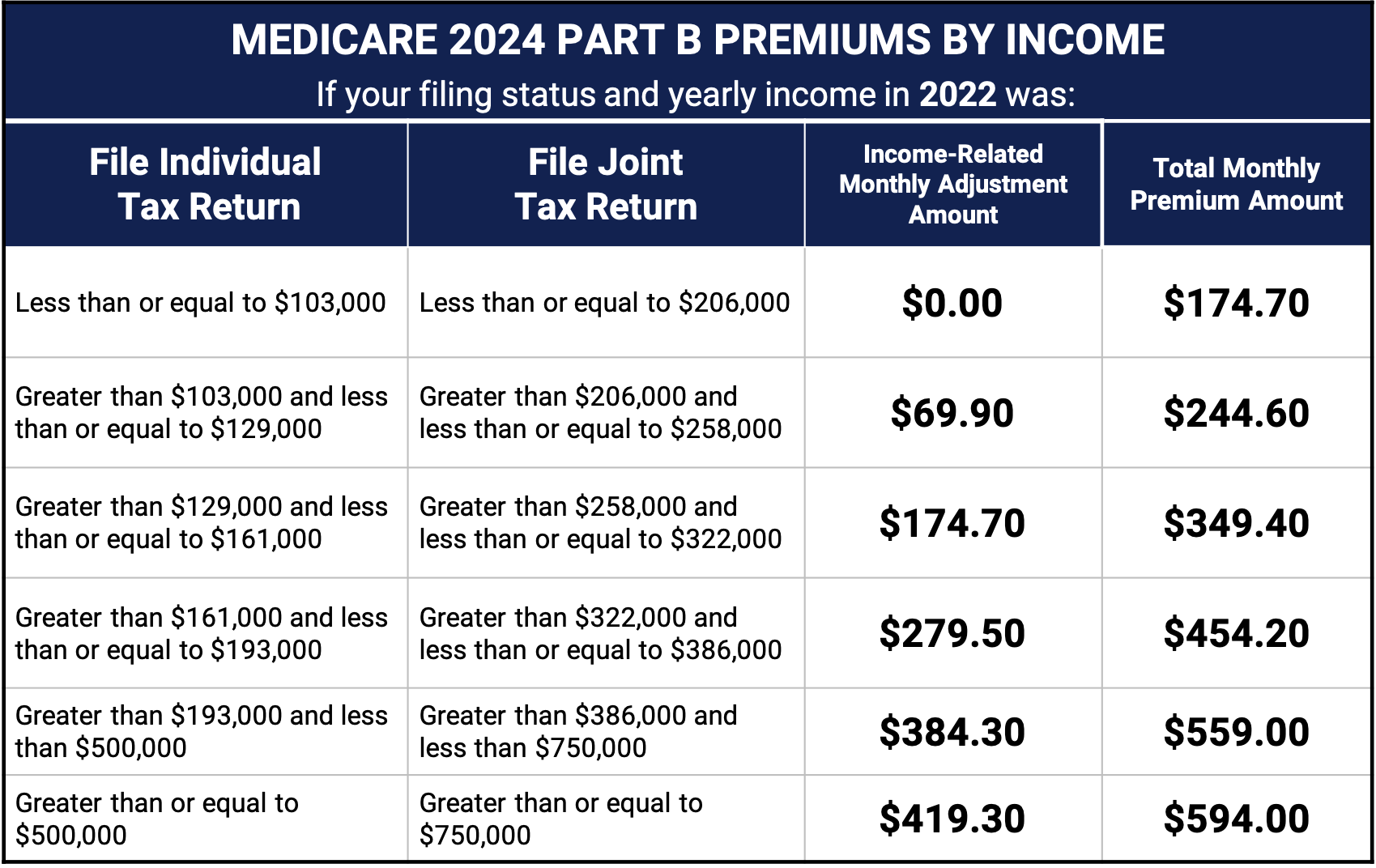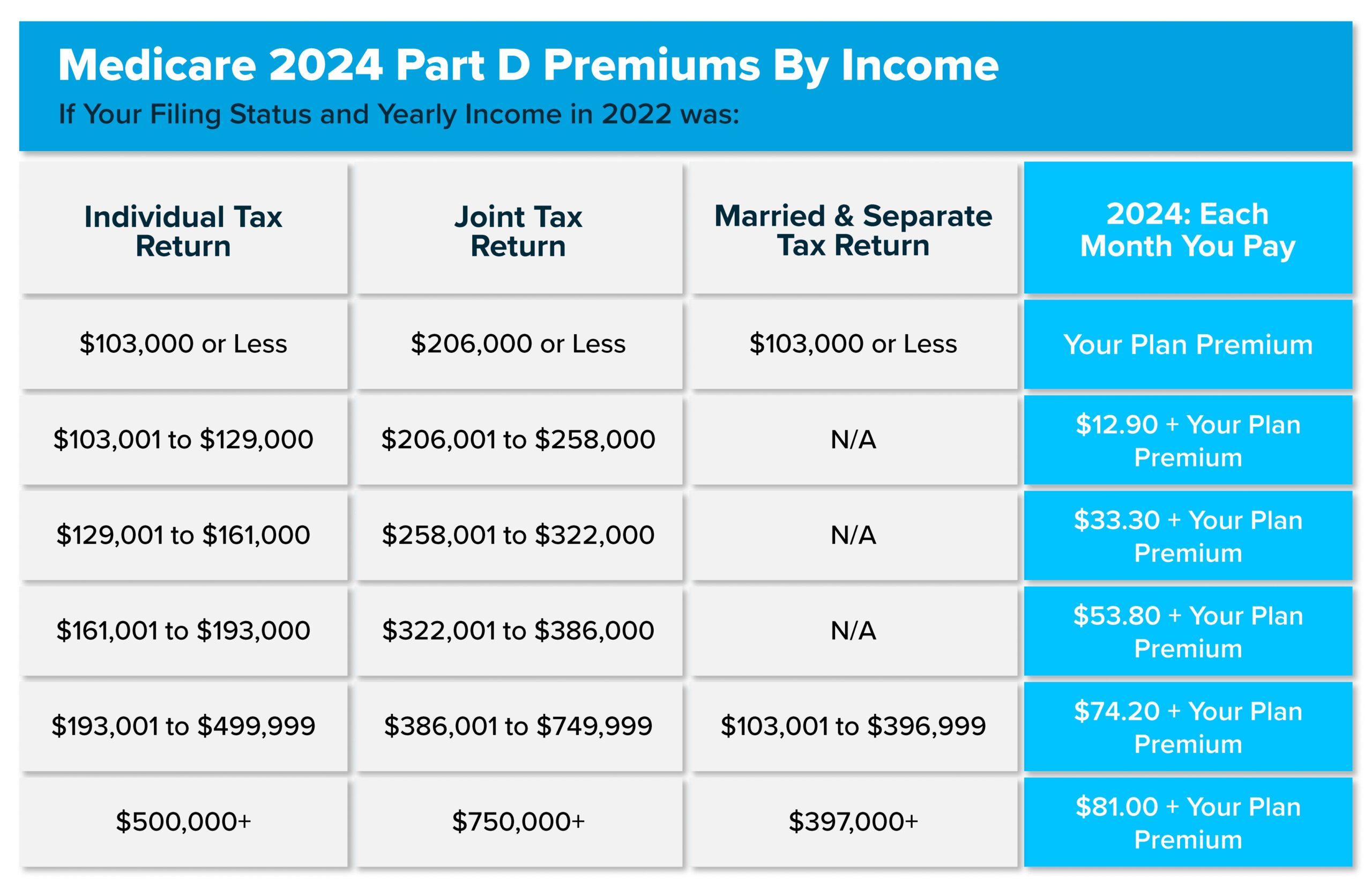 Many individuals are unaware that Medicare Part B and Part D, along with supplementary coverage, come with costs. Upon reaching the age of 65 and enrolling in Medicare, it may come as a surprise that Medicare is not provided free of charge.
Many individuals are unaware that Medicare Part B and Part D, along with supplementary coverage, come with costs. Upon reaching the age of 65 and enrolling in Medicare, it may come as a surprise that Medicare is not provided free of charge.
It is necessary to pay for Medicare. The majority of individuals are required to pay Medicare premiums. Thankfully, it is relatively simple to create a Medicare cost estimate, enabling you to prepare for the expenses in advance.
2024 Medicare Part A (hospital) Costs
Part A Premium is $505 a month if you did not work for 10 years or have 40 work credits. Part A is $0 cost a month with 40 work credits.
Part A Deductibles & Coinsurance
$1,632 deductible for each benefit period Days 1-60 – $0 Coinsurance for each benefit period Days 61-90
$408 coinsurance per day of each benefit period Days 91 and beyond: $816 coinsurance per each “lifetime reserve day” after day 90 for each benefit period ( up to 60 days over your lifetime) Beyond lifetime reserve days: All costs.
2024 Medicare Part B (doctor/medical) Costs
Part B Premium: The standard Part B premium amount is $174.70 ( high earners pay more)
Part B Deductible and Coinsurance: $240 per year and then 20% of the Medicare-approved amount.
The determination of Medicare Part B costs is contingent upon the income of the household. Part B serves as your medical insurance for outpatient services, however, it is not without a price. The premiums for Medicare Part B are calculated based on the modified adjusted gross income (MAGI) of your household. The Social Security office will retrieve your IRS tax return from two years ago in order to ascertain the amount you will be required to pay for Parts B and D. It is worth noting that Part D premiums are also influenced by income.
The components that factor into your adjusted gross income consist of earnings from employment, interest, dividends obtained from investments, and profits made from capital investments. Additionally, it encompasses Social Security benefits and pensions that are deferred from taxation. However, the calculation of modified adjusted gross income does not take into account distributions from Roth IRAs and Roth 401(k)s, life insurance, reverse mortgages, and health savings accounts.
If you and your spouse filed jointly, Social Security will calculate your premiums separately based on your combined income. However, each of you will be responsible for paying your own Part B premium. The premiums for Part B are always individual and not combined. Social Security uses your household income solely to determine your individual placement on the Part B premiums chart.
Social Security typically sends out notifications regarding the upcoming year’s premium in December or early January through mail. Thankfully, there is an option to challenge an increased Part B premium charge. Presently, only a small percentage, approximately 5%, of Medicare beneficiaries are subject to higher premiums for Medicare Parts B and D.

It is advisable to monitor the Medicare income limits periodically as they might undergo adjustments every few years. If you meet the eligibility criteria for Original Medicare based on End-Stage Renal Disease and have recently undergone a transplant, the newly introduced Part B coverage for immunosuppressive drugs might be of interest to you.
Apart from the monthly premium, you will also be responsible for the Part B deductible and coinsurance for medical services covered by Medicare.
Medicare Cost for Part D for 2024
Similar to Part B, the costs of Medicare Part D (prescription drug coverage) are dependent on your income. The premiums for Medicare Part D in 2024 also vary depending on the plan you choose. Each state offers a selection of 20 or more plans for you to consider. In most states, you can find plans with monthly premiums starting at around $10 to $15. The premium amount for your chosen plan is referred to as the base premium for Part D.
Unless you fall into a higher income bracket, you will be required to pay the plan’s published base premium. Individuals with higher incomes have to pay more for Part D. It is crucial to take this into account when comparing the potential costs of Medicare Part D with other insurance options, such as employer insurance. Additionally, it is important not to overlook the cost of prescription drugs, as you will have copays and coinsurance for most medications.

If you discover that your income bracket has increased due to higher income reported in your previous tax returns compared to your current retirement income, we recommend appealing the higher premium. By appealing the higher premium based on a qualifying life event, you can potentially obtain Medicare savings during your retirement years.
How Much Will You Pay for Medicare?
If you find the information a bit perplexing, there is no need to worry. It is a common for Medicare premiums to increase annually, our team of agents are here to assist you in understanding the exact cost associated with your Medicare coverage.
Many individuals discover that Medicare, along with a Medicare supplement, proves to be more cost-effective compared to the private insurance they had prior to enrolling in Medicare. Regardless of the scenario, it is advisable to obtain estimates of your expenses for Original Medicare before your retirement. This will enable you to plan ahead and ensure that you have sufficient savings for the future.
We are more than capable of helping you ascertain your potential costs through a simple phone call, providing you with an average Medicare cost. Additionally, we can aid you in planning for the projected expenses of Medicare in 2024.
Takeaways
In 2024, the typical Part B premium paid by the majority of individuals amounts to $174.70. However, individuals with a higher income have the option to pay a higher premium. Many beneficiaries are eligible for Part A without any premium charges. Additionally, your income also influences the premium for Part D.
 Mario Arce
Mario Arce
I have been working with Medicare clients since 2016. I serve California members in San Bernardino & Riverside county.


